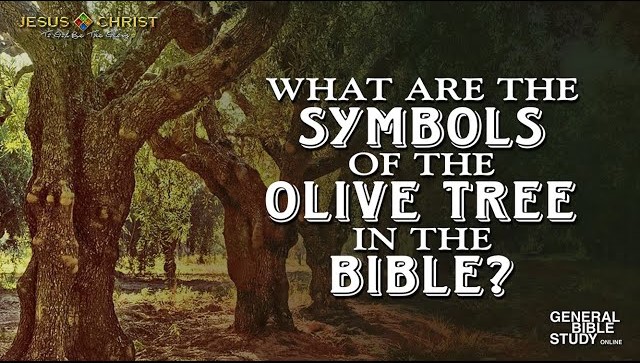
Footnote: Navigating Diverse Perspectives on Christian Doctrines
Within the realm of Christian theology, there exists a wide array of interpretations and perspectives on various doctrines, some of which may seem contradictory or contentious. Examples include differing views on the timing of the rapture and the beginning of the tribulation, as well as debates surrounding eternal security versus the possibility of a believer losing their salvation. These divergent viewpoints have been subjects of dispute and discussion for centuries among theologians and believers.
It is crucial to recognise that while these doctrinal differences may be significant in shaping individual beliefs and interpretations, they are not essential to the core message of salvation. The foundational tenets of the Christian faith, such as belief in the atoning sacrifice of Christ and the need for repentance and faith in Him, remain constant irrespective of one’s stance on secondary theological matters.
The multiplicity of views on doctrines like the timing of the rapture and eternal security reflects the complexity of interpreting Scripture and the limitations of human understanding. What we believe about these issues is, in essence, our own interpretation or opinion based on our study of Scripture and theological reflection.
However, as time progresses and prophetic events unfold, it is possible that the truth regarding certain doctrines will become clearer. By diligently studying Scripture and engaging with diverse perspectives, believers can develop a deeper understanding of God’s Word and discern the truth amidst differing interpretations.
Therefore, rather than engaging in divisive debates or conflicts over these doctrinal issues, our focus should be on seeking understanding and unity within the body of Christ. By approaching these discussions with humility, openness, and a commitment to truth, we can navigate the complexities of Christian doctrine with grace and discernment.
Ultimately, our goal should be to align ourselves with the revealed truth of God’s Word and to remain receptive to adjusting our views as we grow in knowledge and understanding. As prophetic prophecies unfold in living history, may we be discerning and open-hearted, recognising and embracing the truth as it is unveiled, particularly concerning doctrines such as the timing of the rapture and the beginning of the tribulation.
- 1 Corinthians 11:25 In the same way He took the cup also after supper, saying, “This cup is the new covenant in My blood; do this, as often as you drink it, in remembrance of Me.”
- 2 Corinthians 3:6 who also made us adequate as servants of a new covenant, not of the letter but of the Spirit; for the letter kills, but the Spirit gives life.
- Hebrews 8:7 A New Covenant: For if that first covenant had been faultless, there would have been no occasion sought for a second.
- Hebrews 8:8 For finding fault with them, He says, “Behold, days are coming, says the Lord, When I will effect a new covenant With the house of Israel and with the house of Judah;
Understanding Israel’s Roots: From Jacob’s Sons to the New Covenant with the House of Israel

The story of Israel begins with the twelve sons of Jacob, also known as Israel, whose descendants formed the foundation of the nation. These twelve patriarchs, born to Jacob and his wives Leah and Rachel, along with their handmaidens Bilhah and Zilpah, represent the twelve tribes of Israel.
From this lineage emerged a people uniquely chosen by God to fulfil His purposes in the world.
The distinction between the House of Judah and the House of Israel arises from the historical division of the kingdom following the reign of King Solomon. After Solomon’s death, his son Rehoboam’s oppressive rule led to a revolt, resulting in the division of the kingdom into the northern kingdom of Israel and the southern kingdom of Judah.
The northern kingdom, consisting of ten tribes, retained the name Israel and established its capital in Samaria. The tribes of Reuben, Simeon, Dan, Naphtali, Gad, Asher, Issachar, Zebulun, Ephraim, and Manasseh comprised this kingdom. On the other hand, the southern kingdom, comprised primarily of the tribe of Judah along with Benjamin and portions of Levi, became known as Judah, with Jerusalem as its capital.
Throughout the Old Testament, the distinction between the House of Israel and the House of Judah remains significant, particularly in the context of prophetic messages concerning the restoration and redemption of God’s people. Despite their shared ancestry, the two kingdoms experienced different fates due to their faithfulness or unfaithfulness to God’s covenant.
The prophetic writings, particularly in the books of Jeremiah and Ezekiel, anticipate a future restoration of both the House of Israel and the House of Judah. However, it is noteworthy that the New Covenant, prophesied by Jeremiah, is explicitly made with the House of Israel and the House of Judah (Jeremiah 31:31). This covenant represents a new era of grace and reconciliation, where God’s laws are written on the hearts of His people, transforming them from within.
The significance of God making the New Covenant with the House of Israel rather than the House of Judah lies in the rejection of Yeshua (Jesus) as the Messiah by the majority of the Jewish leadership and people at the time of His earthly ministry. The House of Judah, represented by the Jewish people, largely rejected Jesus’ claim to be the long-awaited Messiah, leading to His crucifixion.
However, through the death and resurrection of Jesus Christ, God’s redemptive plan extends beyond ethnic boundaries to include all who believe in Him, Jew and Gentile alike. The Apostle Paul articulates this truth in his letter to the Romans, affirming that salvation is available to all who have faith in Jesus Christ (Romans 1:16).
In conclusion, the story of Israel begins with the twelve sons of Jacob and unfolds through the historical divisions of the kingdom into the House of Israel and the House of Judah. Despite their differences, both houses share in the promise of restoration and redemption through the New Covenant. While the House of Judah rejected Yeshua as the Messiah, God’s grace extends to all who believe, transcending ethnic distinctions and inviting all into His covenantal blessings. As participants in the New Covenant, we are called to embrace the transformative power of God’s grace and to walk in obedience to His will, bearing witness to His redemptive love in the world.
The Olive Tree Symbolism: Unveiling New Covenant Israel in Hebrews 8 and Romans 11
In the intricate tapestry of biblical imagery, the olive tree emerges as a profound symbol representing the essence of New Covenant Israel. In Hebrews 8 and Romans 11, this ancient emblem takes on rich theological dimensions, revealing the significance of Jesus Christ as God’s Olive Tree and the Holy Spirit as His Olive Oil. Through the lens of these passages, we explore how Jews and Gentiles are grafted into this spiritual reality, and how God’s covenantal promises find fulfilment in the House of Israel.

Hebrews 8 stands as a pivotal chapter in the New Testament, marking the inauguration of the New Covenant prophesied by Jeremiah. Here, the author elucidates the superiority of the New Covenant over the Old, emphasising internal transformation through the indwelling of the Holy Spirit. Central to this discourse is the imagery of the olive tree, symbolising the identity and destiny of God’s chosen people.
Throughout the Old Testament, the olive tree symbolised prosperity, fertility, and the covenantal relationship between God and His people. Psalm 52:8 beautifully depicts this imagery, declaring, “But I am like an olive tree flourishing in the house of God; I trust in God’s unfailing love forever and ever.” Here, the olive tree embodies the flourishing life of those who trust in God and abide in His presence.
In Hebrews 8:11, the olive tree symbolism is invoked to illustrate the intimate knowledge of God that characterises the New Covenant community. It states, “No longer will they teach their neighbour, or say to one another, ‘Know the Lord,’ because they will all know me, from the least of them to the greatest.” This verse underscores the restoration of the covenantal relationship between God and His people, made possible through the redemptive work of Jesus Christ and the empowering presence of the Holy Spirit.
Jesus Christ emerges as God’s Olive Tree, embodying the fulfilment of God’s promises to Israel. He is the true Israel, the faithful servant who perfectly fulfils God’s will. Just as the olive tree produces fruit, Jesus Christ brings forth the fruits of righteousness, salvation, and reconciliation with God for all who believe in Him. Through His sacrificial death and resurrection, Jesus inaugurates the New Covenant, ushering in a new era of grace and redemption.
The Holy Spirit, symbolised as God’s Olive Oil, plays a vital role in the New Covenant economy. Just as olive oil was used for anointing in the Old Testament to signify God’s empowerment and blessing, the Holy Spirit anoints believers with power from on high. Acts 1:8 declares, “But you will receive power when the Holy Spirit comes on you; and you will be my witnesses in Jerusalem, and in all Judea and Samaria, and to the ends of the earth.” The presence of the Holy Spirit in the lives of believers signifies their inclusion in the New Covenant community and empowers them to fulfil God’s purposes.
Romans 11 further elucidates the symbolism of the olive tree, particularly in the context of Jews and Gentiles being grafted into New Covenant Israel. The Apostle Paul employs this imagery to illustrate how both Jews and Gentiles are partakers of God’s covenantal blessings through faith in Jesus Christ. In verses 17-24, Paul describes the olive tree as representing Israel, with natural branches symbolising the Jewish people and wild branches symbolising the Gentiles. Through faith in Jesus Christ, both groups are grafted into the olive tree of God’s promises, becoming partakers of His covenantal blessings.
In conclusion, the olive tree symbolism in Hebrews 8 and Romans 11 unveils the profound reality of New Covenant Israel. Jesus Christ, as God’s Olive Tree, embodies the fulfilment of God’s promises, while the Holy Spirit, as His Olive Oil, empowers believers to live out the reality of the New Covenant. Through faith in Jesus Christ, both Jews and Gentiles are grafted into this spiritual reality, becoming partakers of God’s covenantal blessings. As participants in this covenantal relationship, we are called to abide in Christ, the true Vine, and to yield ourselves to the transforming work of the Holy Spirit in our lives, bearing fruit that glorifies God and testifies to His redemptive power.
The Divine Reconciliation: Understanding the Covenantal Shift in Hebrews 8

Hebrews 8 unfolds a profound theological narrative, exploring the nature and recipients of the New Covenant promised by the prophet Jeremiah. Yet, within this chapter lies a subtle yet significant shift in covenantal recipients, shedding light on the intricate dynamics of God’s redemptive plan. Verses 8 and 10 reveal a divine drama that traces the trajectory of the covenant from its original intent for both the House of Judah and the House of Israel to its exclusive application to the House of Israel.
This shift, rooted in the rejection of Yeshua (Jesus) as the Messiah by the majority of the Jewish people, presents a theological paradigm that invites reflection on the universal scope of God’s grace and the restoration of His chosen people.
In verse 8 of Hebrews 8, the author invokes the prophecy of Jeremiah 31:31-34, which speaks of a new covenant that God will establish with both the House of Judah and the House of Israel. This inclusive language underscores the covenantal unity of God’s people, transcending historical divisions and anticipating a future restoration and reunification under the banner of the New Covenant. The promise of internal transformation—where God’s laws are written on the hearts and minds of His people—resonates with the universal longing for reconciliation and redemption.
However, verse 10 presents a subtle yet significant departure in covenantal recipients, focusing exclusively on the House of Israel: “For this is the covenant that I will make with the house of Israel after those days, declares the Lord: I will put my laws into their minds, and write them on their hearts, and I will be their God, and they shall be my people.” This narrowing of focus raises questions about the fate of the House of Judah and the theological implications of this covenantal realignment.
The historical backdrop to this shift lies in the rejection of Yeshua as the Messiah by the majority of the House of Judah, commonly referred to as the Jewish people. Despite the fulfilment of Messianic prophecies and the proclamation of the Gospel, many Jewish leaders and individuals refused to acknowledge Jesus as the long-awaited Saviour. This rejection, culminating in Jesus’ crucifixion, marked a decisive turning point in the covenantal relationship between God and His people.
As a consequence of this rejection, the covenantal blessings originally intended for both the House of Judah and the House of Israel were withdrawn from the former and extended exclusively to the latter. This theological reality underscores the principle of divine judgement and the consequences of unbelief. However, it also reveals the depth of God’s mercy and the universality of His redemptive plan.
The apostle Paul elaborates on this theological reality in his letter to the Romans, where he speaks of a partial hardening that has come upon Israel until the fullness of the Gentiles has come in (Romans 11:25). This hardening, manifested in the rejection of Yeshua as the Messiah, has resulted in the temporary removal of the covenantal blessings from the House of Judah and their extension to the House of Israel, encompassing both Jewish and Gentile believers united in faith in Jesus Christ.
Yet, Paul also speaks of a future restoration and reconciliation, where the House of Judah—the natural branches—will be grafted back into the olive tree of God’s covenantal blessings alongside the Gentiles—the wild branches (Romans 11:23-24). This imagery highlights the ongoing work of God’s grace and the eventual reunification of His chosen people under the banner New Covenant Israel.
In conclusion, Hebrews 8 unveils a theological narrative that traces the trajectory of the New Covenant from its original intent for both the House of Judah and the House of Israel to its exclusive application to the House of Israel due to the rejection of Yeshua as the Messiah by the majority of the Jewish people. This covenantal shift underscores the universal scope of God’s grace and the ongoing work of reconciliation and restoration, inviting all—Jews and Gentiles alike—to embrace the transformative power of the New Covenant through faith in Jesus Christ.
- Compiled by Kevin Piper
- NB: This view and does not necessarily reflect the views of Reach NZ as a group.
